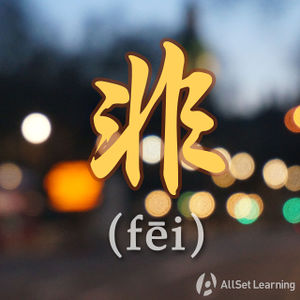Difference between revisions of "Expressing "could it be possible that" with "mofei""
| Line 2: | Line 2: | ||
{{stub}} | {{stub}} | ||
| − | "莫非"(mò fēi)is generally used at the start of the second clause of sentence.This grammar pattern can express doubt or make a guess It can also be used to ask a rhetorical question, similar to [[Rhetorical Questions with "nandao"|难道 (nándào).]] | + | "莫非"(mò fēi)is generally used at the start of the second clause of sentence. This grammar pattern can express doubt or make a guess It can also be used to ask a rhetorical question, similar to [[Rhetorical Questions with "nandao"|难道 (nándào).]] |
== Structure == | == Structure == | ||
| Line 10: | Line 10: | ||
<div class="jiegou"> | <div class="jiegou"> | ||
| − | + | Fact, + 莫非 + conjecture + (不成)? | |
</div> | </div> | ||
Revision as of 06:42, 20 May 2016
| This article is a stub. Editors can help the Chinese Grammar Wiki by expanding it. |
"莫非"(mò fēi)is generally used at the start of the second clause of sentence. This grammar pattern can express doubt or make a guess It can also be used to ask a rhetorical question, similar to 难道 (nándào).
Contents
Structure
When expressing doubt or making a guess, use the following pattern. The 不成 at the end of the sentence is optional. Remember that in this form, the 莫非 is usually at the beginning of the second clause.
Fact, + 莫非 + conjecture + (不成)?
Examples
- 眼前 这个 人,莫非 就是 大名鼎鼎 的 房地产 大亨?
- 这么 晚 了 他 还 没有 回来,莫非 他 出 了 什么 事 ?
- 桌子 上 那 条 鱼 怎么 不 见 了,莫非 被 猫 偷 吃 了不成?
- 莫非 他 听 到 了 我们 的 谈话?
Structure
You can use 莫非 the same way you would use 难道: in a rhetorical question. Remember that these questions are to emphasize a point, so they usually aren't meant to be answered.
Subject + 莫非 + rhetorical question
or
莫非 + Subject + rhetorical question
Examples
- 莫非 她 真的 是 你 的 亲生 母亲?
- 莫非 你 真的 相信 他?
- 莫非 他 真的 要 去 丛林 探险?



